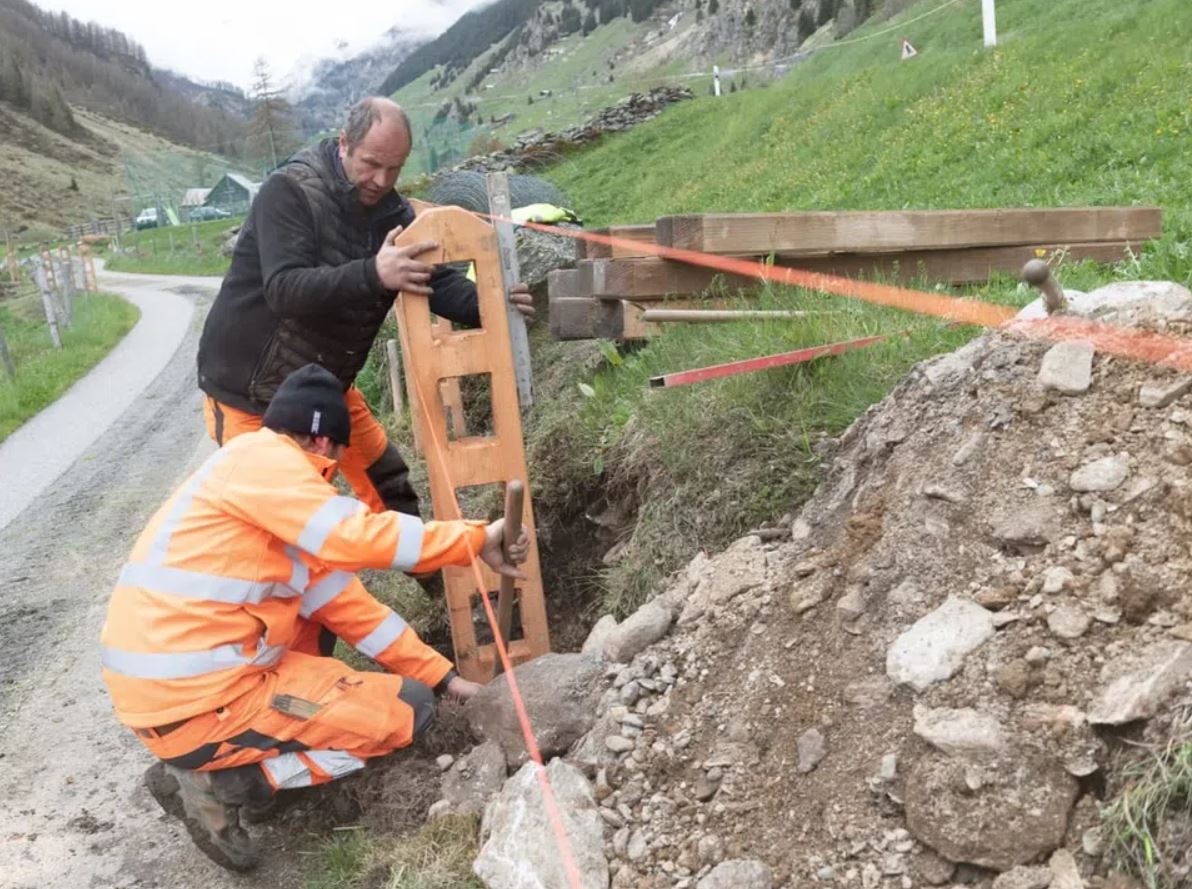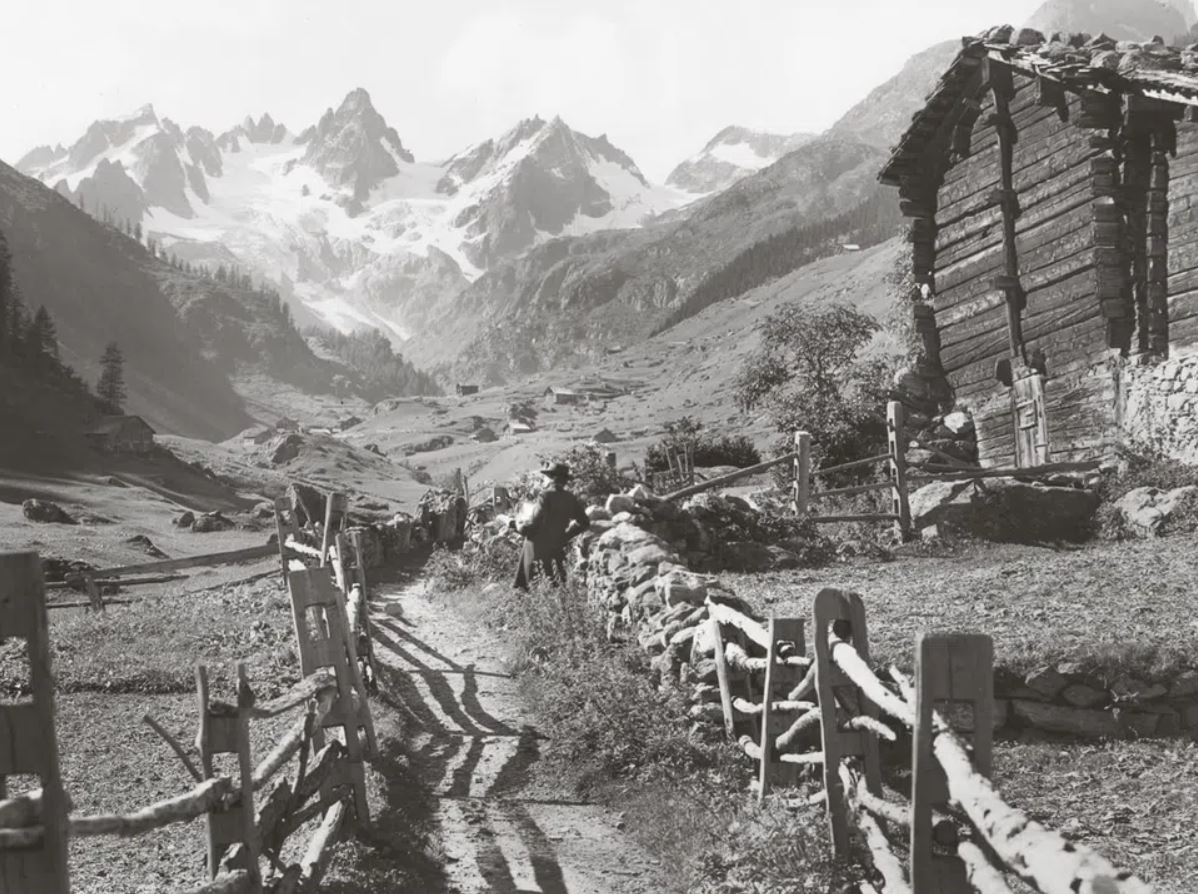
New lease of life for unique canton Uri fences

The isolated valley of Meiental in central Switzerland is home to a unique network of historic wooden fences which are currently being partially renewed.
At first glance the fences lining an Alpine path in canton Uri don’t look particularly special. But these ones are.
Due to their specific construction and durability they have been a firm part of the region’s landscape for over 150 years; they have even earned a mention in the Swiss federal inventoryExternal link of landscapes and natural monuments.
The wooden fences in Meiental are typically made from thick posts of larch wood, firmly anchored in the ground. The posts have square holes within which the crossbeams sit, in such a way that they can be opened everywhere to allow cattle or horses through.
Making the fence in the traditional way requires a certain craftsmanship: for example, to fashion the special structures which attach and anchor the postings.
In recent years, however, broken fences were not always replaced. Pia Tresch, managing director of the conservation group Pro Natura Uri, feared that they were heading for complete disappearance. “It’s an old tradition here in the Meiental to make the fences like this,” she says. But the complex process was often “neglected”.
Some 7.5 kilometres of regional wood
According to Tresch, the cost and time involved in replacing the fences properly were also factors in their neglect. “In some cases plastic fences were put up,” she says.
She and her group decided to take action, and launched a campaign to save the “Hag”, as the traditional style of fencing is locally called.
Pro Natura found various donors for the project, including several foundations, the Uri cantonal authorities, and the Swiss Federal Roads Office. The 7,500 metres of wood needed were all sourced in the region.
Historic route
Meiental is a remote valley characterised by rough terrain. From the town of Wassen on the north-south A2 motorway, the valley ramps steeply westwards towards the Susten pass. The old “Sustenweg”, on which the fences are located, is historically important as a mule track and is part of the federal inventory of historical transport routes.
The old fences, which are also part of this historic landscape, should now be solid enough again to last another few decades – to this end, Pro Natura has established a fund to pay for their annual upkeep.

The Meiental valley is popular as a hiking destination, but is also a place affected by de-population.
The small hamlets lying along the Sustenweg are home to fewer and fewer people, says Beat Zgraggen, the project director for the reconstruction. “In 1850, 460 people lived in the valley. Now it’s 65. The climate is tough, and it’s not easy to make a living from the soil.”
Photogenic
Previously, logging was a typical job for the winter months. “In winter the farmers had time to go and chop larch wood,” Zgraggen says. “There is a lot of larch here.”

And already a century ago, the wooden fences were popular photo ops for travellers in the Meiental – historical pictures in canton Uri’s archives testify to this. Still today they provoke palpable interest: Tresch says she has “already received very positive feedback about the new fences” – from hikers, but also from experts from other cantons.
Translated from German by Domhnall O’Sullivan

In compliance with the JTI standards
More: SWI swissinfo.ch certified by the Journalism Trust Initiative
















![The four-metre-long painting "Sonntag der Bergbauern" [Sunday of the Mountain Farmers, 1923-24/26] had to be removed by a crane from the German Chancellery in Berlin for the exhibition in Bern.](https://www.swissinfo.ch/content/wp-content/uploads/sites/13/2025/12/01_Pressebild_KirchnerxKirchner.jpg?ver=cb688ed5)














You can find an overview of ongoing debates with our journalists here . Please join us!
If you want to start a conversation about a topic raised in this article or want to report factual errors, email us at english@swissinfo.ch.